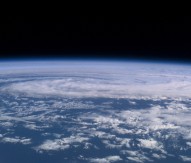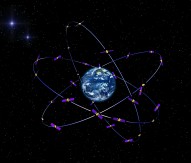
End of Universe black holes investigated by ERC grant
Scientists funded by the European Research Council and working in the UK and United States are investigating the growth of ancient quasars.
Black holes with masses equalling billions of our sun are known as quasars and feed on interstellar gas, swallowing large quantities of it non-stop. The light that is emitted by the gas as it is sucked in and crushed by the black hole’s gravity travels for eons across the Universe until it reaches telescopes on Earth. These far-off, ancient quasars appear as ‘baby photos’ taken less than a billion years after the Big Bang.
Professor Tal Alexander, head of particle physics at the Weizmann Institute of Science, and Professor Priyamvada Natarajan of Yale University aim to investigate ancient quasars and what processes could lead a small black hole to gorge and fatten to such an extent so soon after the Big Bang.
Their model begins with the formation of a small black hole in the very early Universe. At that time, cosmologists believe gas streams were cold, dense and contained much larger amounts of material than the thin gas streams we see in today’s cosmos. The hungry, newborn black hole moved around, changing direction all the time as it was knocked about by other baby stars in its vicinity. By quickly zigzagging, the black hole continually swept up more and more of the gas into its orbit, pulling the gas directly into it so fast that the gas could not settle into a slow, spiralling motion. The bigger the black hole got, the faster it ate; this growth rate, explains Alexander, rises faster than exponentially.
After around ten million years, the black hole would have filled out to around 10,000 solar masses. From then, the colossal growth rate would have slowed to a somewhat more leisurely pace, but the black hole’s future path would already be set, leading it to eventually weigh in at a billion solar masses or more.
Normally, a black hole forms when a massive star, weighing tens of solar masses, explodes after its nuclear fuel is spent. Without the nuclear furnace at its core pushing against gravity, the star collapses, and much of the material is flung outwards in a great supernova blast, while the rest falls inward, forming a black hole of only about ten solar masses.
The research thesis has been published in the journal Science.






